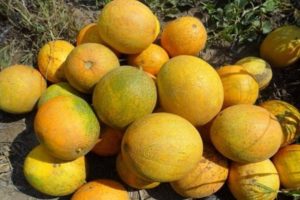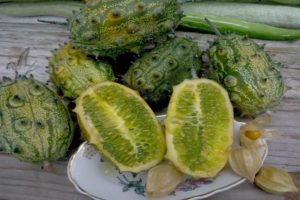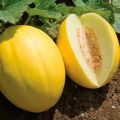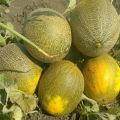Description of the melon variety Caramel, features of cultivation and care
Having recently appeared on the shelves, the Caramel melon has won the hearts of not only consumers, but also gardeners. Juicy, sugar fruits literally melt in your mouth, a strong aroma does not allow you to pass by. Initially, the variety was planned to be used for the industrial cultivation of early ripening melons, but now it has taken root more so far in summer cottages and private gardens.
Description of the variety
The fruits of the hybrid variety differ from the rest in their large size, oval shape, yellow or light brown skin, which is covered with a dense network of cracks. The pulp has a characteristic creamy color, strong aroma and light caramel flavor.
Melon Caramel is very sweet and tasty, which attracts the attention of consumers. Initially, the variety was planned to be grown on an industrial scale, but summer residents loved it so much that they quickly began to cultivate it on their plots.
Caramel has a dense and thick skin, which provides a long shelf life without loss of taste and marketability. The area with small seeds, the seeds themselves are unsuitable for further use and growing seedlings from them, since the variety belongs to hybrids and has an f1 mark.
Melon Caramel produces fruits weighing up to 3 kg and up to 24 cm long. The first harvest is larger than the subsequent ones. The presentation and taste are excellent. The variety belongs to the early, the first harvest can be harvested a couple of months after germination. Caramel is grown both in the open field and in greenhouse conditions.
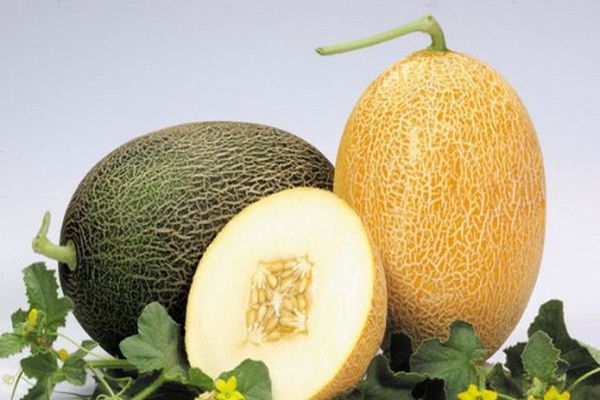
A significant advantage of the variety is its increased resistance to adverse weather conditions. Even when the air temperature rises to +30 ° C, the yield is stable and of high quality. Up to 90 tons of fruits are harvested from one hectare.
Caramel shoots long lashes along the ground, on which additional roots are formed. They provide the plant with additional nutrition. The trellis method of growing for this variety is undesirable, since in this case the plant is deprived of the opportunity to receive additional nutrients, and this affects the quantity and quality of the crop. One bush is able to form from 2 to 8 full-fledged fruits.
Caramel melon harvest can be:
- to use fresh;
- convert;
- make jam;
- make jams and candied fruits.
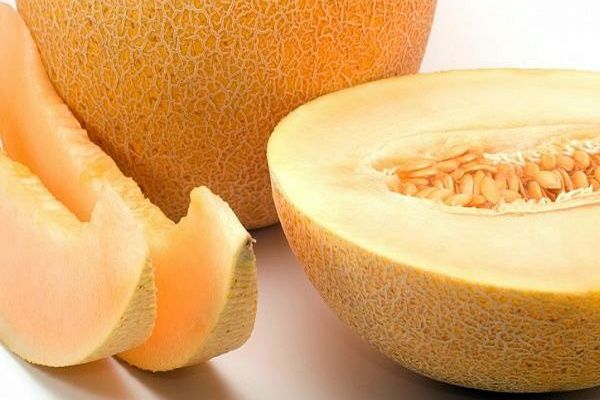
The fruits are kept fresh for 15–25 days, they tolerate transportation over long distances well and do not lose their qualities.
Growing features
Caramel is a very thermophilic plant, like its other cousins. Seeds are sown in open ground only when the soil temperature reaches + 15 ° С, and night air temperatures will not fall below +16 ° С.In different regions, this indicator is achieved at different times, therefore it is important to remind here that the variety is early maturing and is able to ripen even in a short summer.
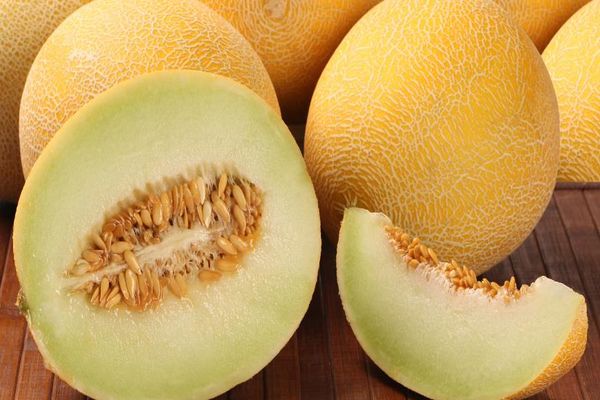
If pre-treated seeds were purchased, then it is immediately fashionable to sow them in open ground. The rest should be pre-soaked in a weak solution of potassium permanganate, and then in a growth stimulator. The best place for planting will be those beds in which they were previously grown:
- potatoes;
- cabbage;
- any kind of legumes.
But you should not plant Caramel on the previous place with pumpkins or zucchini.
The selected variety belongs to the light-requiring, prefers sunny and well-lit beds with loose and fertile soil. The acidity level should be neutral. Peat, sand and humus are introduced into the heavy loamy soil before planting the melon Caramel. All lumps in the holes are carefully broken to make it easier for the sprouts to break through.
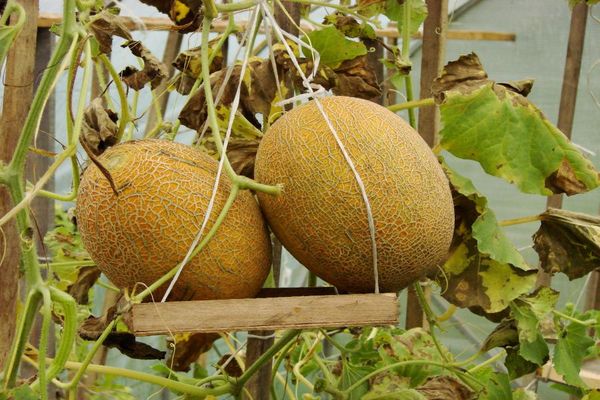
Seeds are planted to a depth of no more than 4 cm. The first shoots hatch after a week. The distances between the plants are left at 20 cm, and the row spacing is up to half a meter. If planting is done in holes, then no more than 4 seeds are placed in each. Between the holes at least 60 cm recede. Thickened plantings adversely affect the yield of Caramel. She needs not only a lot of space, but also a large amount of air, nutrients, moisture.
Care features
Caramel needs regular watering. This is especially true for the initial period of plant growth and development, as well as flowering and fruit formation. But during the ripening of the crop, the amount of watering is reduced.
This makes the melons sweeter and more aromatic. Watering is done 1-2 times a week, depending on weather conditions. Water is poured in large portions under the root, or systems for drip irrigation are introduced.
Caramel is fed with complex fertilizers containing phosphorus, nitrogen and potassium. It should be remembered that an increased nitrogen content will negatively affect both the quality of the crop and its taste. Melons need constant weed removal. The area should be weeded with a hoe, but if the plantings are thickened or the bushes have grown strongly, then the weeds are pulled out manually. If possible, try to avoid the use of herbicides on their site. They will not cause noticeable harm, but they will negatively affect the chemical composition of the fruit.
